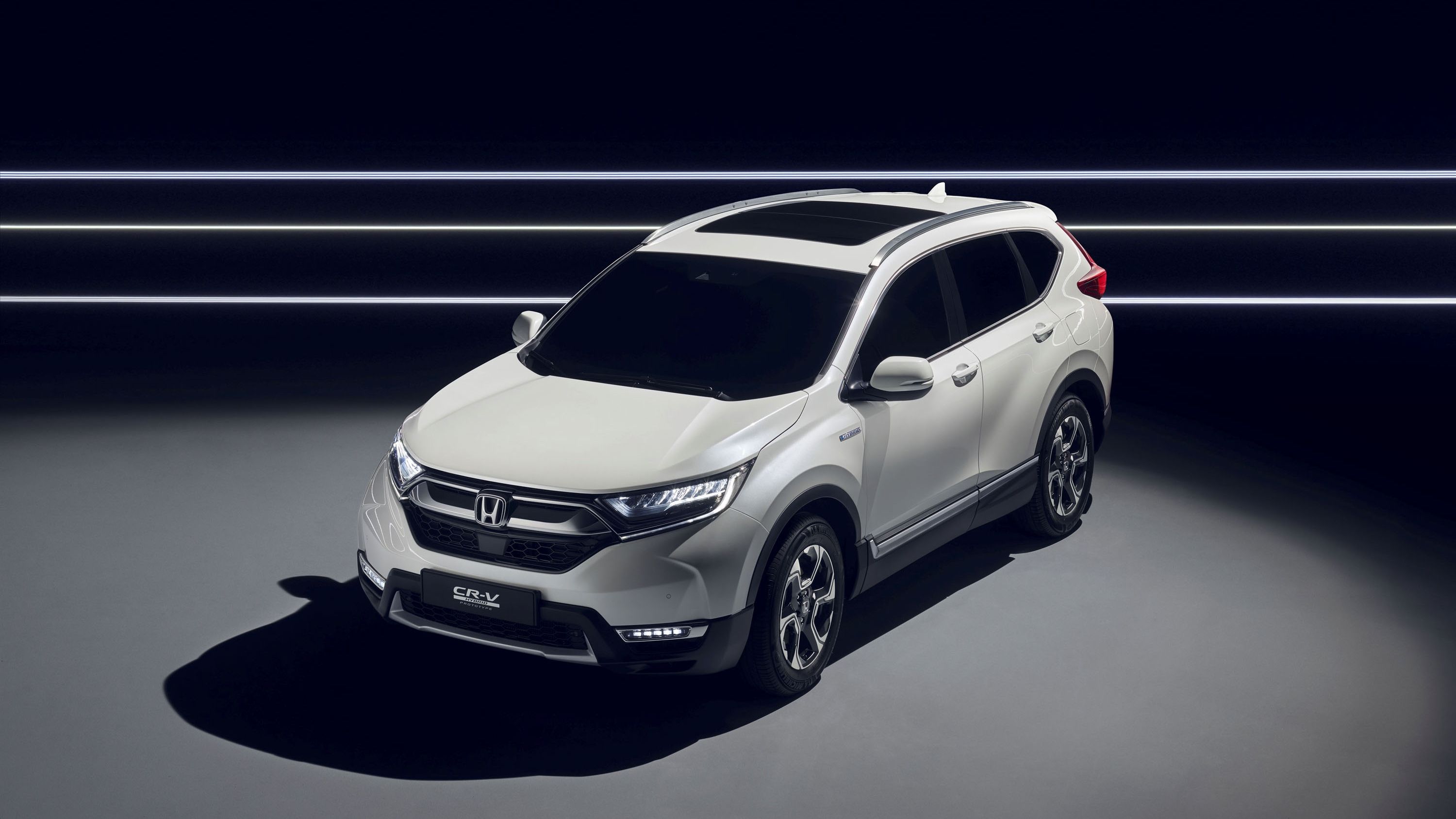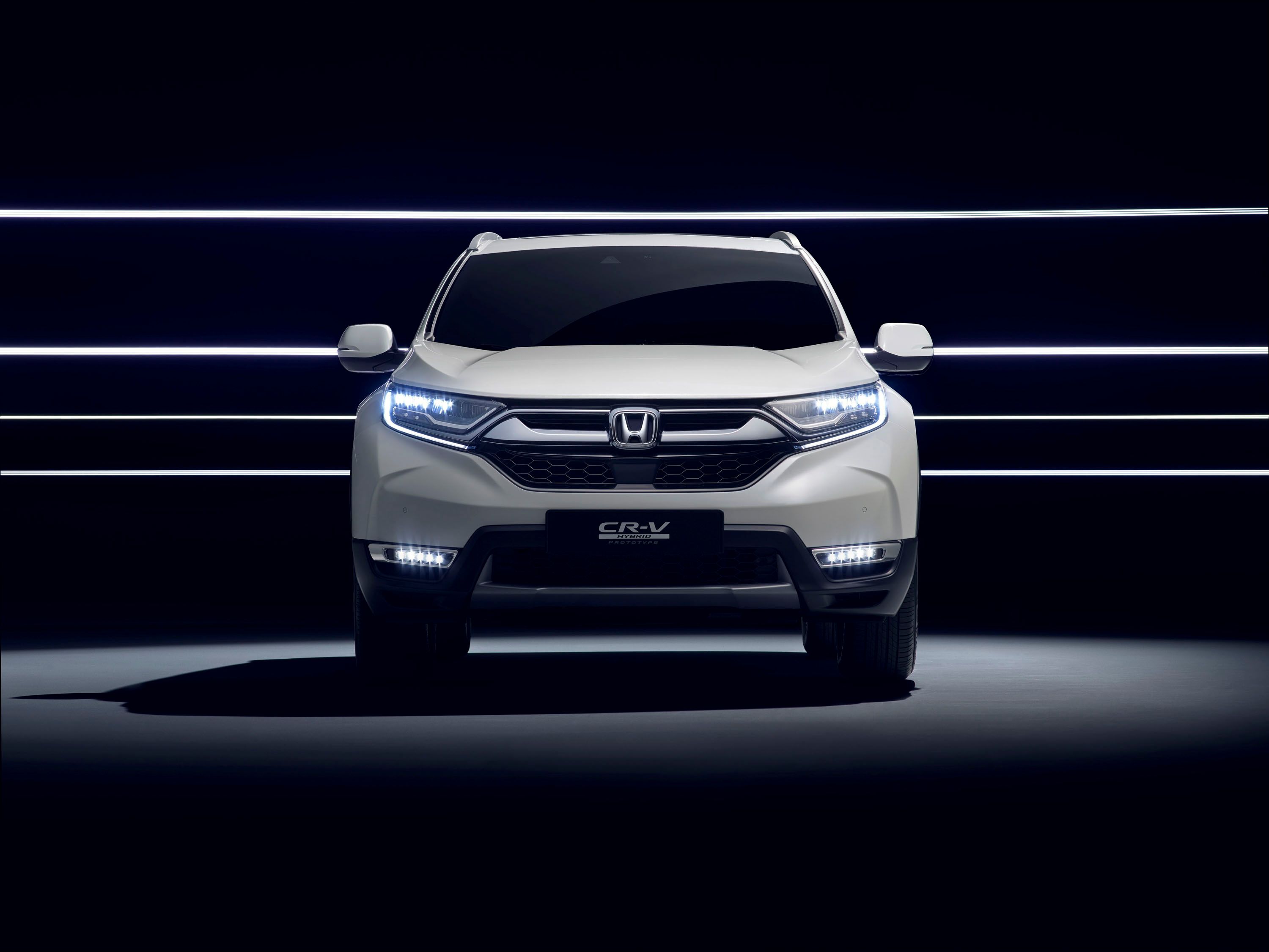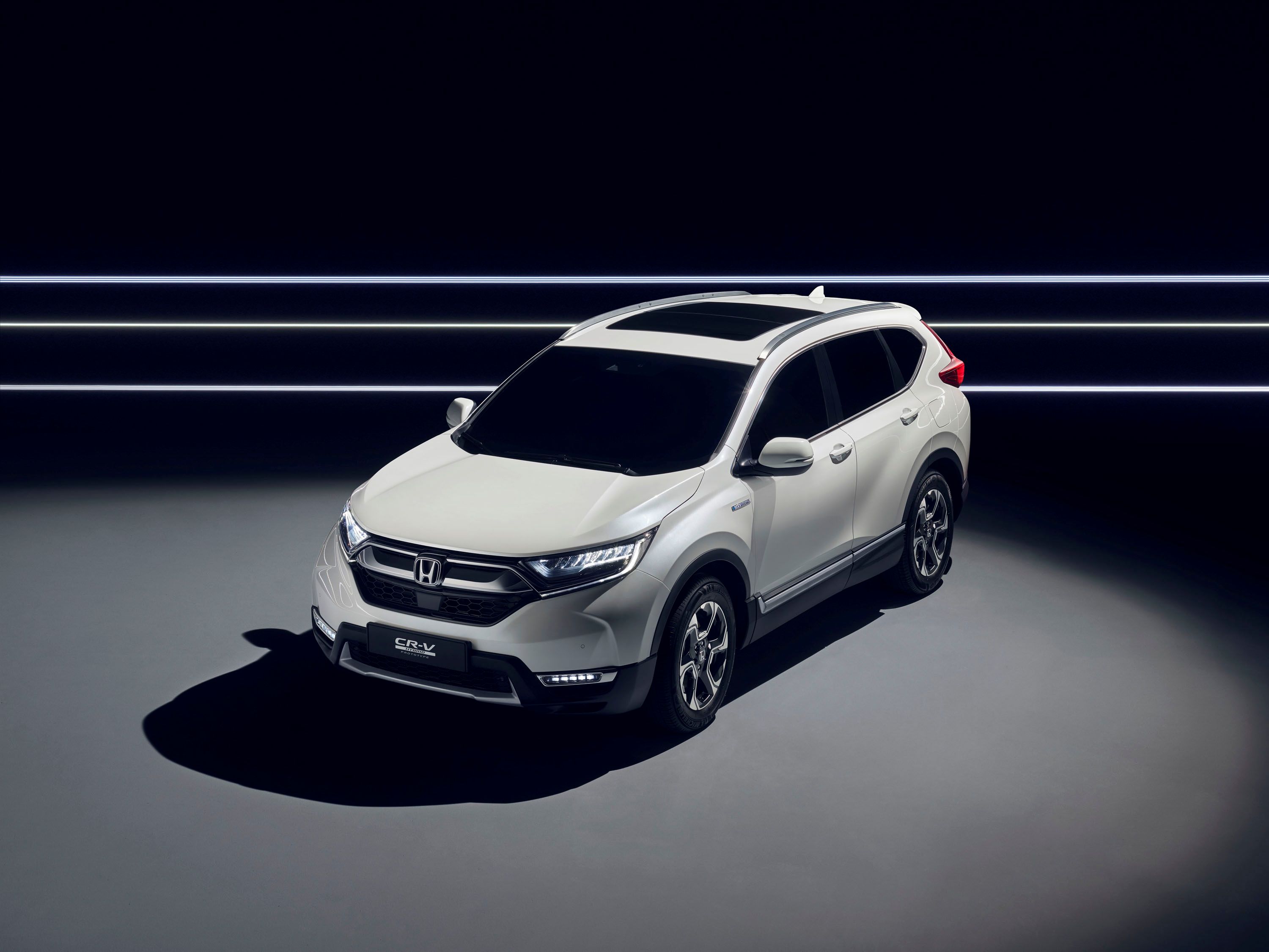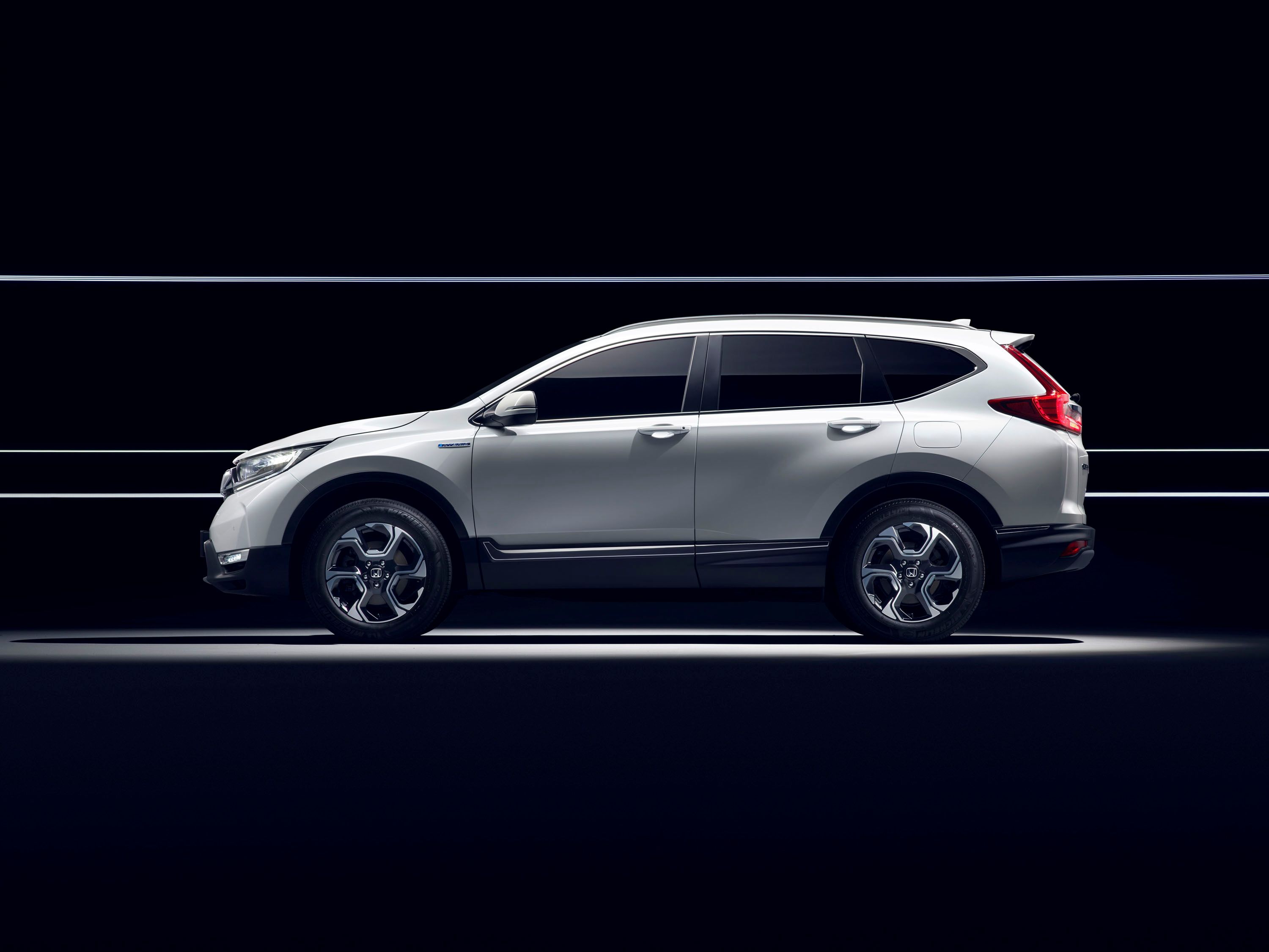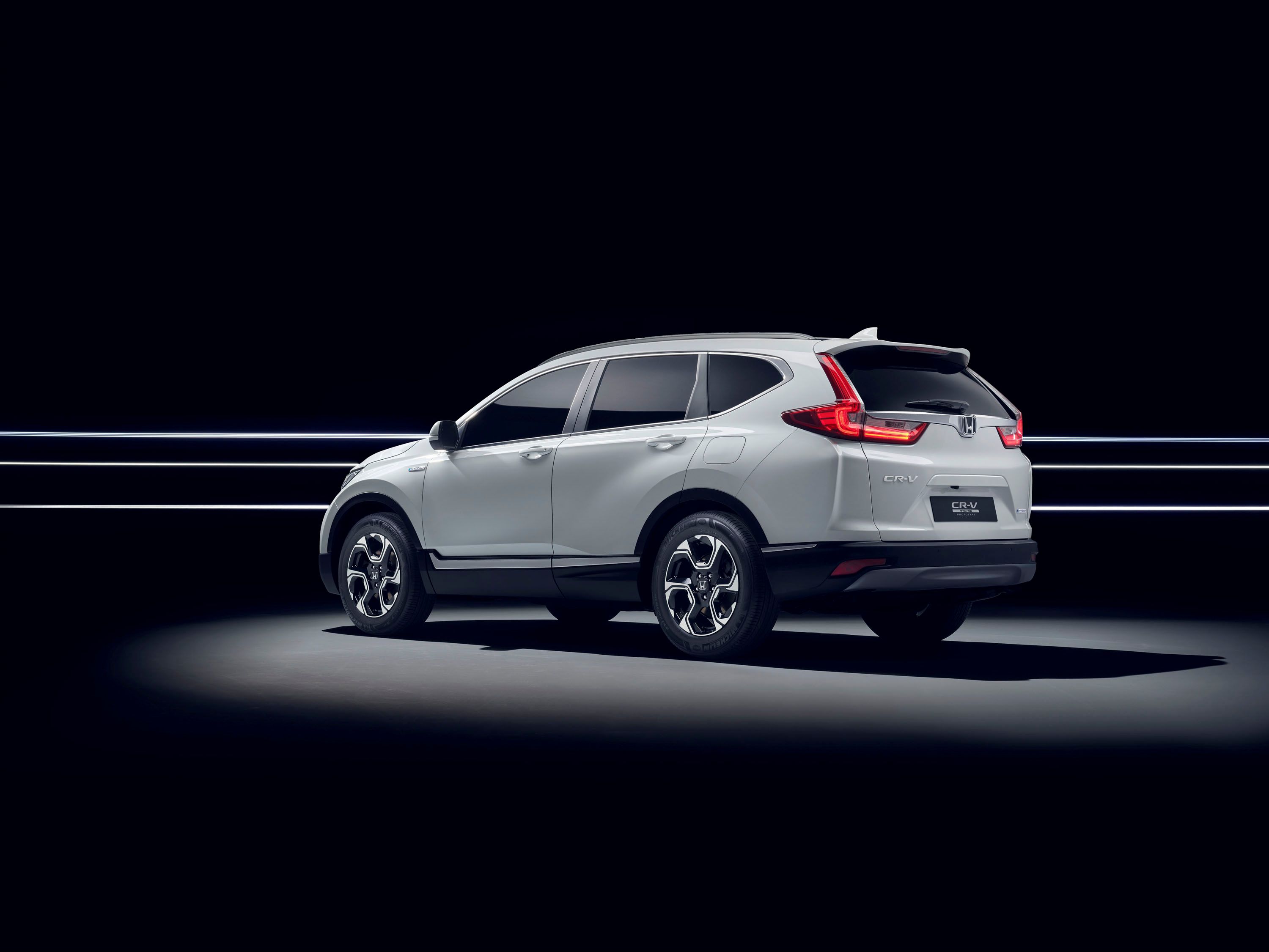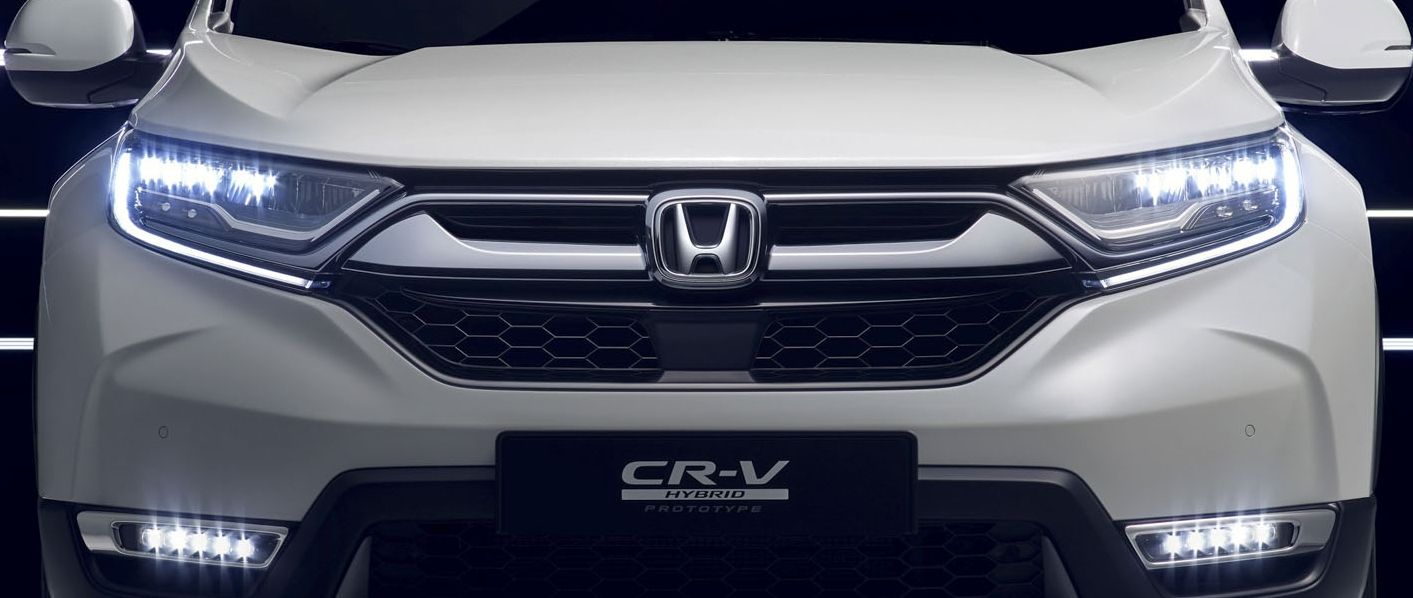As the SUV and crossover body style continues to grip European markets with a surge in popularity, automakers are rushing to fill any and all gaps left in their tall-bodied lineup. Honda is no different, and without a green alternative in its compact crossover offerings, competitors like Kia and Toyota are scooping up sales left right. Basically, it boils down to missed opportunities for the H badge, but now, that’s about to change as Honda previews its upcoming hybrid CR-V. It’s called the CR-V Hybrid Prototype, and quite frankly, that “Prototype” in the name is probably completely unnecessary – this thing looks almost totally production ready. Not only is this the first time Honda has brought hybrid tech to a European-market SUV, but it’s also rumored the model could come stateside some time in the future. Either way, expect sharper styling, a 2.0-liter gas engine, and two electric motors.
The prototype will get its big public reveal later this month at the 2017 Frankfurt Motor Show, following in the footsteps of an earlier, China-bound hybrid CR-V revealed at the Shanghai Motor Show in April. So then – what does the prototype bring to the table, and what can we expect when the finalized production variant makes its appearance? Read on for all the details.
Continue reading to learn more about the Honda CR-V Hybrid Prototype.
2017 Honda CR-V Hybrid Prototype
- Make: Array
- Model: 2017 Honda CR-V Hybrid Prototype
- [do not use] Vehicle Model: Array
Exterior
You’d be forgiven for not instantly recognizing it, but there are a few visual updates to distinguish the hybrid CR-V from its non-hybrid counterparts. It’s also possible many of these aesthetic updates will simply get carried over to all new iterations of the CR-V going forward, although Honda isn’t totally clear on that in the attached press release.
Either way, look for wider, taller, and longer dimensions than before, all of which makes sense – after all, the natural tendency in this segment is to get bigger over time, and if you’ve got extra battery power on board, why not?
Complementing the bigger dimensions are broad wheel arches fitting a larger wheel and tire package. The wheel design is a funky, turbine-esque look, the kind of thing we’ve come to expect from electrified vehicles, and although the design was originally seen on previous model years of the CR-V, it works on the hybrid as well. The A-pillars were also made thinner, and the various corners and lines were all tightened and sharpened.
Up front is the latest styling language from Honda, while new headlight graphics complete the fascia.
The overall effect is an evolution of the preceding model, but we think the look works. The front end looks a bit more confident than before, and the sharpened edges feel about right for the model.
Interior
Note: 2017 Honda CR-V pictured here.
Honda declined to give us any insight into the CR-V’s cabin space, so instead, we’ll look to standard CR-V for hints. We’d expect the overall layout to go unchanged, with a broad, horizontal emphasis for the dash, a large infotainment screen in the central console, and a three-spoke steering wheel. Materials like soft-touch covers for the dash, wood trim, and brushed-metal look bits should pervade throughout, while a TFT display will be mounted behind the steering wheel.
Features will likely include navigation, smartphone support via Apple CarPlay and Android Auto, dual-zone climate control, USB charge ports, and a good deal of space in back for people and things.
Hybrid-specific stuff like drive system info readouts will complete the transition to hybridization.
Drivetrain
Note: Honda Accord Hybrid engine pictured here.
Although exact specs on the cabin gear is still up in the air, Honda did give us the low down on the engine and powertrain spec, and overall, it sounds quite a bit like what you get in the hybridized Accord sedan.
The heart of it is an Intelligent Multi Mode Drive (or i-MMD) hybrid drivetrain, which makes the go thanks to a 2.0-liter inline four-cylinder i-VTEC gasoline engine mated to two electric motors. One electric motor is used to drive the wheels, while the other is used for electricity generation and topping off the battery. Three individual driving modes are on offer, but driver’s won’t have to be bothered selecting between them. Rather, the computer automatically makes the adjustments based on what’s being asked of it, defaulting into EV Drive, Hybrid Drive, or Engine Drive as the scenario may warrant.
The EV Drive draws motivation directly from the batteries like an all-electric vehicle, yielding zero-emission driving. The Hybrid Drive mode fires up the gas engine and sends power to the electric generator, mixing both gas and electric power for maximum efficiency. Finally, Engine Drive is used for maximum power, drawing drive directly from gas engine, but boosting it via the electric motor.
“In most urban driving situations, the vehicle will move between Hybrid Drive and EV Drive for optimum efficiency,” says Honda. “Engine Drive is engaged as needed for brisk acceleration and for efficient highway driving.”
It should be noted that the gas engine uses the Atkinson cycle for maximum efficiency, while the motive power is sent to the ground via a single fixed-gear ratio transmission. It’s assumed the CR-V hybrid will be FWD, but AWD might get added to the options list as well.
Power output is expected to top out at about 215 horsepower, just like the Accord.
Furthermore, the CR-V Hybrid will be offered alongside a turbocharged 1.5-liter VTEC gas engine, with both a CVT and a manual gearbox on the options list for non-hybrid models. The CR-V’s diesel powerplant probably won’t see a comeback, relinquishing its position as the greener alternative in the wake of declining oil burner popularity in Europe.
Prices
We expect to see a full unveil of the production-ready Honda CR-V Hybrid sometime “early next year,” with a launch in Europe following shortly thereafter.
Thus far, Honda has provided no info on official pricing, but if we were to guess, a figure of roughly 30,000 pounds in the U.K. ($39,137 at current exchange rates, 09/06/2017) should fit the bill.
Competition
Toyota Rav-4 Hybrid
When searching for a rock solid crossover with some green capabilities, buyers are bound to check out the Toyota Rav-4 Hybrid along the way. Mixing a ton of space with electrified gas economy (up to 60.1 mpg), the Rav-4 brings the goods, and it’s got the safety technology for peace of mind as well, offering Toyota’s Safety Sense suite of features.
Read the full review on the Toyota Rav-4 Hybrid.
Kia Niro
Say hello to Kia’s very first gasoline-electric hybrid. Rocking the same guts as the Hyundai Ioniq, the Niro offers a 1.6-liter gas engine with a 32-kW electric motor, laying down 139 horsepower total. Routing the power towards the ground is a six-speed dual-clutch transmission, which helps the Niro achieve efficiency as high as 75 mpg.
Read the full review on the Kia Niro.
Conclusion
Honda is smart to jump into this space sooner rather than later. With the popularity of diesel taking a hit in Europe, traditionally a market that eats up the oil burners, folks will be looking for a high-efficiency alternative, and the hybrid powerplant looks to be a solid choice.
That said, hybrids tend to be a bit on the expensive side of the equation, so it’ll be interesting to see if Honda has what it needs to tempt buyers into dealers, and away from anything with a Toyota badge.
References
Honda CR-V
Read our full review on the Honda CR-V.

